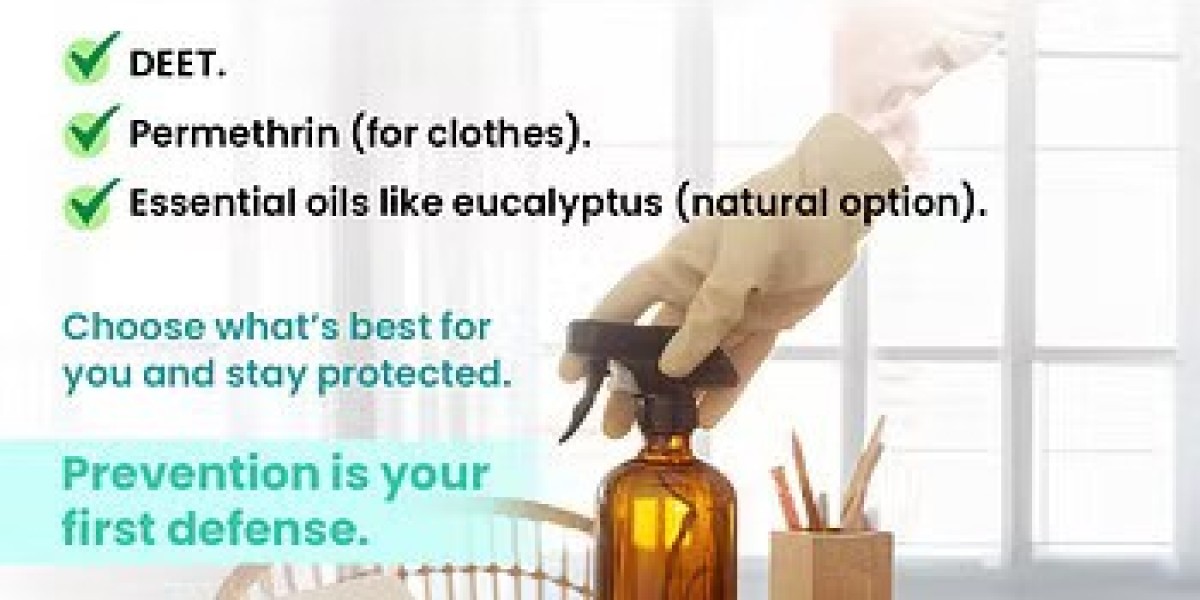Spending time in nature is one of life’s simplest pleasures whether you're hiking through the woods, gardening in your backyard, or playing with your dog at the park. However, these outdoor activities also come with a hidden danger: tick bites. These tiny insects can carry harmful bacteria and viruses, including Lyme disease, anaplasmosis, and babesiosis. That’s why knowing the right first aid for tick bites is not just useful, it's essential.
Proper first aid can reduce the risk of infection and help you act quickly and confidently. In this guide, we’ll walk you through how to safely remove a tick, clean the bite area, and monitor for signs of infection ensuring you stay protected and informed.
Why Tick Bites Matter
Ticks are small, spider-like parasites that attach to skin and feed on blood. While many tick bites are harmless, some ticks are infected with disease-causing bacteria. The longer a tick stays attached, the higher the chance it will transmit an infection. That’s why early removal and proper aftercare are crucial components of first aid for tick bites.
Identify and Stay Calm
If you spot a tick attached to your skin, don’t panic. The first step is to stay calm and prepare to remove it properly. Rushing or using the wrong method can increase the risk of infection.
Remove the Tick Safely
Proper removal is a key part of first aid for tick bites. Here’s how to do it the right way:
What You Need:
Fine-tipped tweezers
Rubbing alcohol or antiseptic
Small container or plastic bag
Gloves (optional but recommended)
How to Remove the Tick:
Use tweezers to grasp the tick as close to the skin’s surface as possible.
Gently and steadily pull upward—do not twist or jerk.
If the tick breaks apart and parts stay in your skin, try to remove them with the tweezers. If you can’t, leave it alone; your body will likely expel it naturally.
Place the tick in a sealed container or bag for potential identification.
Clean the Bite Site Thoroughly
After removing the tick, clean the bite site and your hands with:
Rubbing alcohol
Antibacterial soap and water
Iodine solution (if available)
Apply Antiseptic and Treat the Skin
Once the area is clean, apply an antiseptic such as:
Hydrogen peroxide
Iodine
Tea tree oil (diluted)
Over-the-counter antibiotic ointment like Neosporin
This helps reduce the risk of skin infections and supports faster healing. You may also want to cover the area with a clean bandage if it’s in a spot prone to friction or irritation.
Monitor for Symptoms of Infection
Not every tick bite leads to disease, but some signs could indicate infection or the beginning of a tick-borne illness. Over the next 30 days, watch for:
A red or expanding rash, often shaped like a bull’s-eye
Flu-like symptoms: chills, fever, muscle aches, and fatigue
Joint pain or stiffness
Headaches or dizziness
Swollen lymph nodes
If you experience any of these symptoms, especially within a few weeks of a tick bite, consult a healthcare provider immediately.
Save the Tick for Testing (Optional)
While not mandatory, saving the tick can help if symptoms develop. Place the tick in a sealed plastic bag or small container with a damp paper towel. Label it with the date and location of the bite. Some public health departments or labs can test ticks for disease-carrying pathogens.
When to Seek Medical Help
You should contact a doctor if:
You are unable to fully remove the tick
The bite becomes red, swollen, or oozes pus
You develop any of the symptoms mentioned above
You live in or visited a tick-endemic area
The bite occurred on a child, elderly person, or someone with a weakened immune system
Your doctor may prescribe antibiotics as a preventative measure, especially if the tick was attached for over 36 hours and you’re at high risk for Lyme disease.
How to Prevent Future Tick Bites
While first aid for tick bites is important, prevention is your best defense. Here’s how to protect yourself and your family:
Wear long sleeves and pants when in wooded or grassy areas
Use insect repellent with DEET, picaridin, or oil of lemon eucalyptus
Tuck your pants into your socks and wear closed-toe shoes
Perform full-body tick checks after outdoor activities
Bathe within two hours of being outdoors to wash off unattached ticks
Keep your yard tidy—remove leaves, mow the grass, and create barriers between lawn and wooded areas
Final Thoughts
Ticks may be tiny, but the health threats they pose are significant. By learning and practicing proper first aid for tick bites, you can act quickly, reduce the risk of infection, and know when to seek medical help. Whether you're an avid hiker or a backyard gardener, being tick-aware is part of staying safe outdoors.
Always keep a tick removal kit on hand, educate your family, and take preventive steps. Your awareness and preparation can make all the difference in protecting your health.








